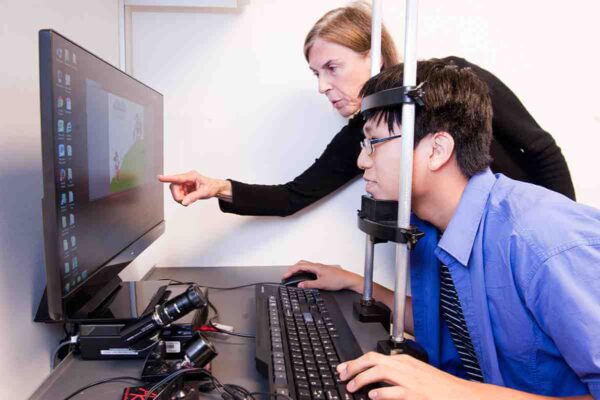
Faculty of Psychology, Moscow State University
About the project
We equipped the faculty with eye trackers and assistive devices for electrooculography. These devices are used to determine the orientation of the optical axis of the eyeball (i.e., to track the eyes). Eye trackers are used in studies of the visual system, psychology, and cognitive linguistics. Several methods are used to track the eyes. The most popular method is a frame-by-frame analysis of video recording of the eye, contact methods are also used. A web-tracker camera captures and records eye movements while the subject is examining a visual stimulus.

Project Deatils
Most modern eye trackers use the contrast between the pupil and the iris, which occurs in infrared illumination. In addition, the position of the highlight of the infrared illumination is analyzed, so that it becomes possible to determine the orientation of the optical axis of the eyeball. Two main types of eye trackers are used: systems based on the bright pupil method; another – systems based on the dark pupil method. Their difference lies in the location of the backlight relative to the camera. If the backlight is parallel to the optical axis of the camera, the eye acts as a secondary light reflector, which comes from the backlight and is reflected from the retina, creating a bright pupil effect similar to the red eye effect in photography. If the backlight source is shifted relative to the optical axis of the camera, the pupil becomes black, because the secondary reflection from the retina does not enter the camera. The effect of a bright pupil allows to track regardless of the color of the iris of the subject. It also helps to overcome the effects of dark eye mascara and eyelashes, partially covering the pupil. It also allows eye tracking under light conditions from total darkness to high light, however, bright-eye techniques are not effective for eye tracking in street conditions due to the others infrared sources.
Eye movements are traditionally divided into fixations and saccades, it means that eye is fixed in some positions and then quickly moves to the next position. The resulting series of fixations and saccades are called the scanpath. The visual analyzer of the human brain receives a lot of information during fixation. The center of the visual field, which is formed by a solid angle of 2 steradians, provides most of the visual information. The signal from the remaining part of the visual field is less informative. As a consequence, the positions of the fixation points that the scanpath gives us objectively show points that attract attention to the visual stimulus. The average duration of fixations is in the range of 200 ms during reading text, and 350 ms during the study of a static image. The process of moving the gaze from one point to another (saccade) takes up to 200 ms.
Scanpath are useful in analyzing cognitive processes, as well as identifying points of interest. Other biological factors, such as gender, can also influence the scanpath. Thus, eye tracking can be used in usability research, as well as in the management of external devices by controlling eye movements.
A wide variety of disciplines that use eye tracking systems: cognitive sciences, psycholinguistics, the study of reading processes, human-machine interaction, marketing research, medical research (neurological diagnostics). Specific applications include studying the movement of the eyes when reading in different languages, reading musical notes, studying the interaction between people, the perception of advertising, sports. Applications:
cognitive research
medical research
human factor
usability research
studies of the process of translation from one language to another
vehicle simulation
research in real vehicles
virtual reality technology
study of adult patients
teen studies
study of elderly patients
monkey research
sports training
fMRI / MEG / EEG registration
commercial eye tracking (web usability, advertising, marketing, ATMs)
optimal choice of one of several options
communication systems for completely paralyzed people
advanced video communication systems
viability detection



